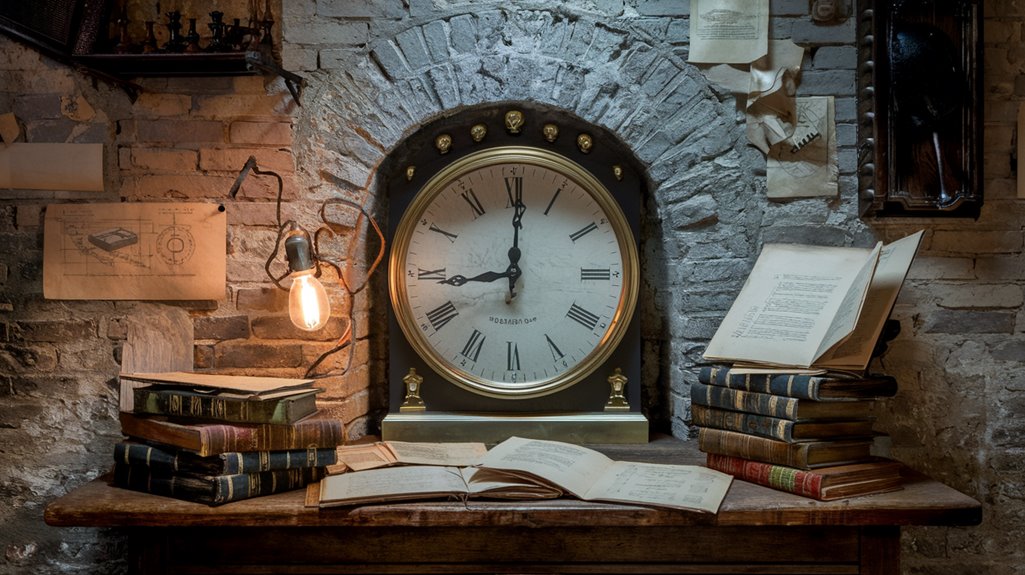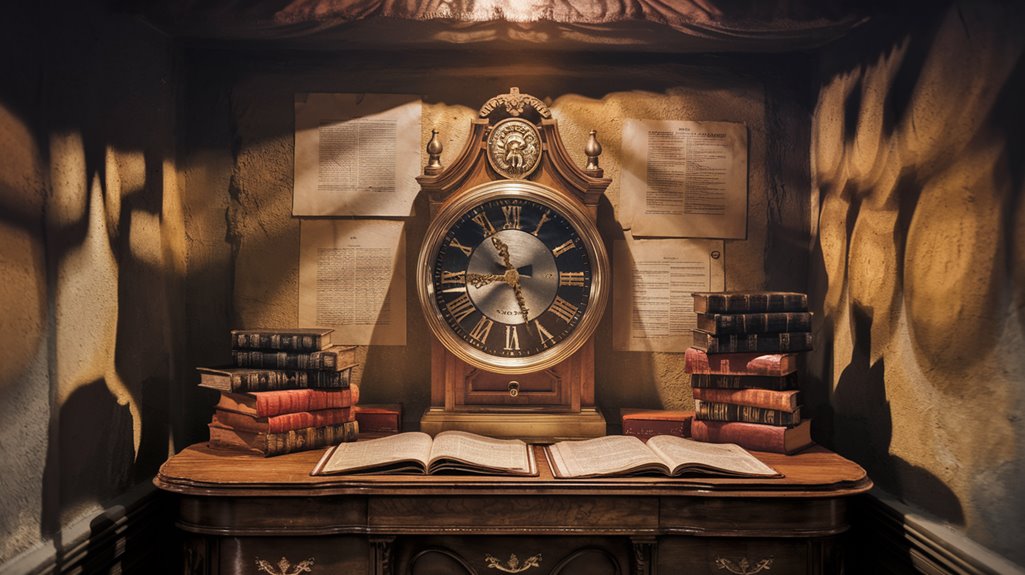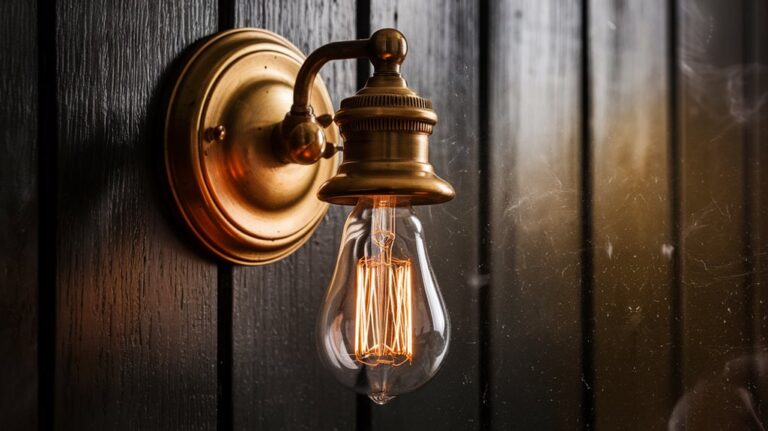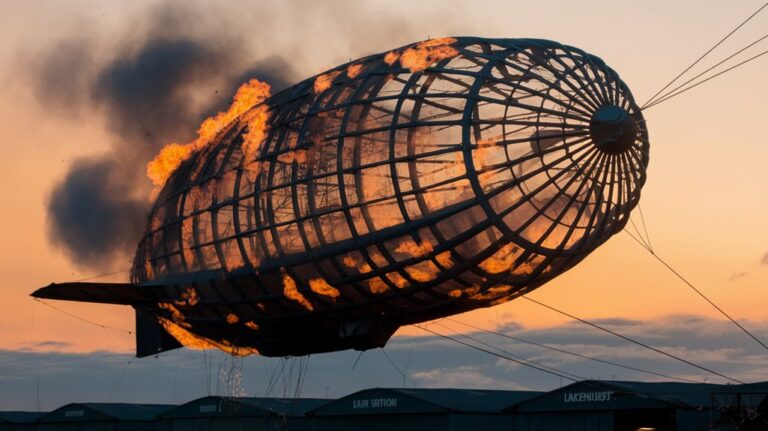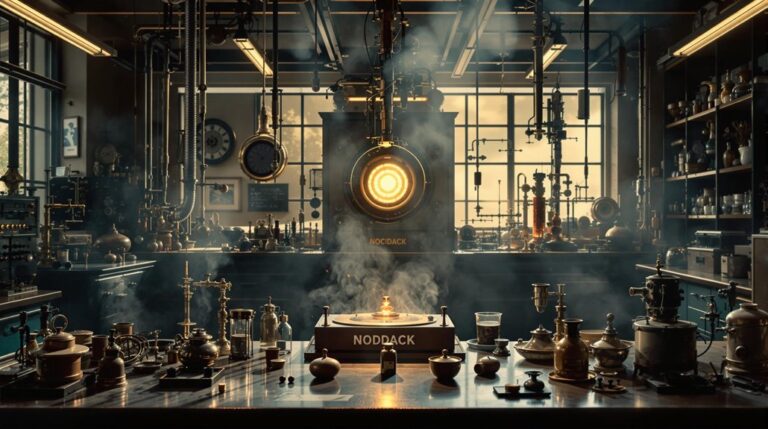The Doomsday Clock: Humanity’s Most Terrifying Countdown
You've probably heard of the Doomsday Clock, but you might not know that some of history's greatest scientific minds created this ominous timepiece. What began as a warning about nuclear weapons has evolved into a sophisticated measure of humanity's dance with destruction. From climate disasters to artificial intelligence risks, the clock now tracks multiple paths to potential catastrophe. At 90 seconds to midnight, we've never been closer to the final hour—and that's not even the most unsettling part.
Origins of the Doomsday Clock: From Manhattan Project to Global Warning
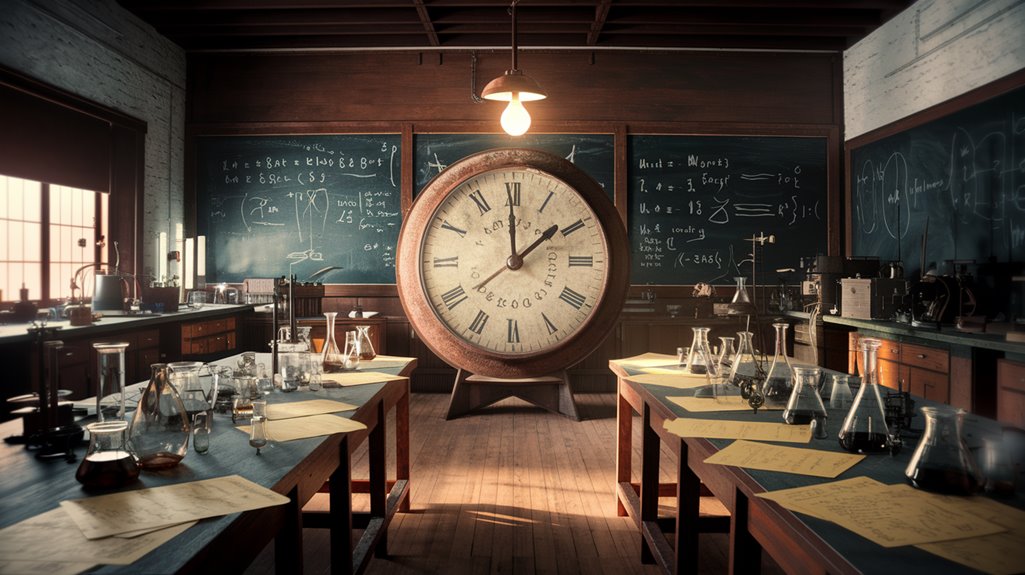
While nuclear tensions gripped the world in the aftermath of World War II, a group of Manhattan Project scientists created the Doomsday Clock in 1947 to visualize humanity's proximity to global catastrophe.
The Doomsday Origins trace back to luminaries like J. Robert Oppenheimer, Albert Einstein, and Eugene Rabinowitch, who emerged from the Chicago Atomic Scientists group during the Manhattan Project.
Artist Martyl Langsdorf first illustrated the Clock for the Bulletin of the Atomic Scientists, setting it at seven minutes to midnight.
Similar to today's Action Clocks used in schools and offices, this powerful visual tool serves as a reminder of urgent global challenges.
Since its inception, the Clock has been adjusted twenty-five times to reflect evolving global threats.
You'll find that this metaphorical timepiece wasn't meant to predict disaster but rather to symbolize the urgent threats facing humanity from unchecked scientific and technological advances.
The Clock's creation marked a pivotal moment when scientists took responsibility for warning the public about the dangers of their own innovations.
The Science Behind the Minutes: How Time Is Measured
Since its inception in 1947, the Doomsday Clock's time has reflected humanity's proximity to catastrophe through a rigorous scientific process. The time measurement isn't arbitrary – it's determined by the Bulletin of Atomic Scientists' Science and Security Board through careful analysis and expert consultation.
When you see the clock's hands move, you're witnessing the culmination of scientific methods that evaluate three major threats: nuclear risks, climate change, and disruptive technologies. The board established the clock's iconic design when artist Martyl Langsdorf created its first cover. The decision-making process has evolved significantly since Eugene Rabinowitch solely determined the clock positions until 1973.
The board considers global events, international conduct, and emerging challenges before announcing their decision each January. Since its initial setting at seven minutes to midnight, the clock has moved 25 times, ranging from 17 minutes (1991) to a mere 89 seconds (2025).
Every adjustment serves as a calculated warning, pushing you to understand and act on humanity's most pressing challenges.
Major Threats Driving the Clock Forward
The Doomsday Clock's current position at 90 seconds to midnight reflects a convergence of unprecedented global threats.
You're witnessing a perfect storm of dangers, with nuclear proliferation taking center stage as Russia's invasion of Ukraine escalates global tensions and weapons threats. Global cooperation efforts remain essential to address these existential dangers.
The climate urgency has become equally critical, with experts warning of a narrow 3-9 year window to prevent catastrophic warming. The ongoing crisis is worsened by wealthy vested interests who consistently prioritize short-term profits over environmental concerns.
You're facing potential tipping points that could trigger unstoppable environmental changes.
Meanwhile, biological threats, including pandemic risks, and emerging technologies like AI add new dimensions of concern.
The combination of these threats, alongside mounting political tensions from conflicts in Ukraine and the Middle East, has created the most dangerous moment in the Clock's history.
Each factor amplifies the others, pushing humanity closer to potential catastrophe.
Historical Movements: Seven Decades of Time Changes
Over seven decades, humanity has watched the Doomsday Clock swing back and forth as global threats evolved. Since its creation in 1947 at seven minutes to midnight, the clock has marked critical time milestones reflecting the world's proximity to catastrophe. The Bulletin's Science and Security Board meets twice annually to evaluate global risks and adjust the clock's position.
The most optimistic setting came in 1991, when global tensions eased after the Cold War, moving the clock to 17 minutes from midnight.
However, you've witnessed a steady march toward danger since then. The clock inched closer through the 2000s as climate change joined nuclear threats as a major concern. As of January 2023, the clock reached its most dire warning yet at 90 seconds before midnight.
The Experts Behind the Clock's Adjustments
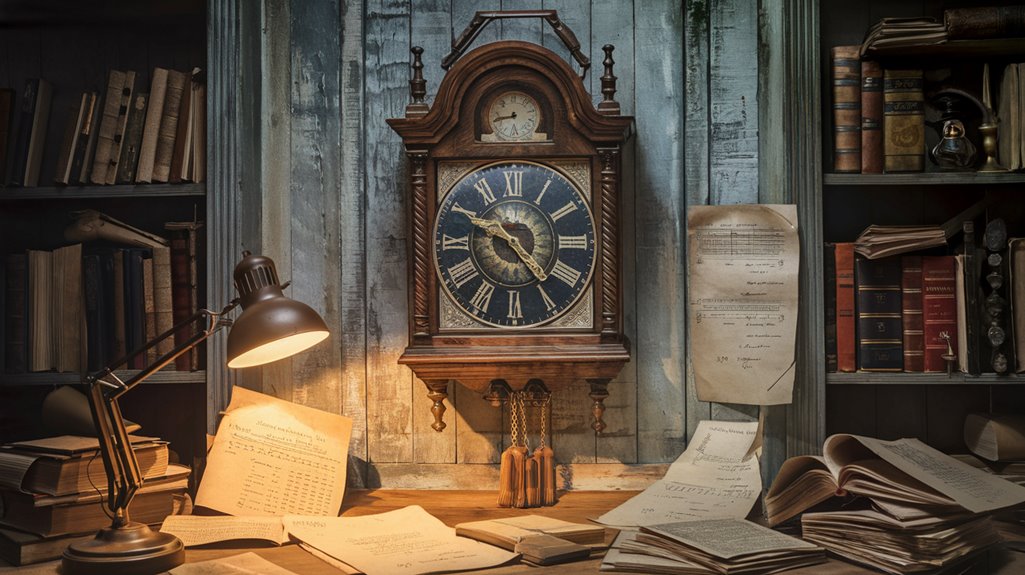
Behind every movement of the Doomsday Clock stands a distinguished group of experts known as the Science and Security Board (SASB) of the Bulletin of the Atomic Scientists.
You'll find remarkable expert diversity within this 18-member board, which includes Nobel laureates, physicists, diplomats, and climate scientists from countries like Colombia, India, and the United States.
The SASB meets twice yearly to evaluate global threats through a transparent decision-making process. They carefully weigh factors including nuclear risks, climate change, and disruptive technologies. Their most recent evaluation led to setting the clock at 90 seconds to midnight following Russia's invasion of Ukraine.
When you see the clock's annual adjustment each January, you're witnessing the culmination of extensive consultations and deliberations.
The board's decision transparency is evident in their detailed explanations of clock movements, ensuring you understand the rationale behind humanity's most watched warning system. This critical process began in 1973 when the board took over responsibility for clock assessments from Editor Eugene Rabinowitch.
Global Impact and Cultural Significance
Since its creation in 1947, the Doomsday Clock has evolved into humanity's most recognized symbol of existential risk, deeply embedding itself in global consciousness through art, music, literature, and political discourse.
You'll find the Clock's cultural resonance in works by Stephen King and Piers Anthony, as well as in songs from legendary bands like The Clash, The Who, and Pink Floyd.

